By Robert Schultz and Kip Holmes
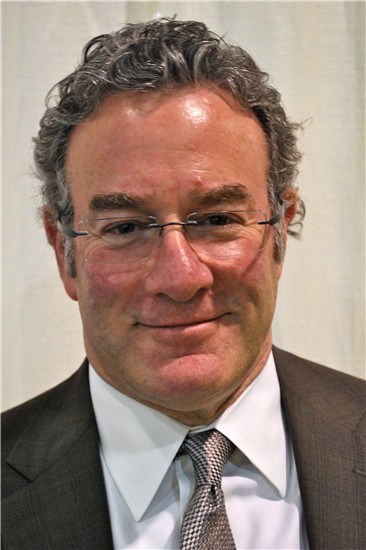
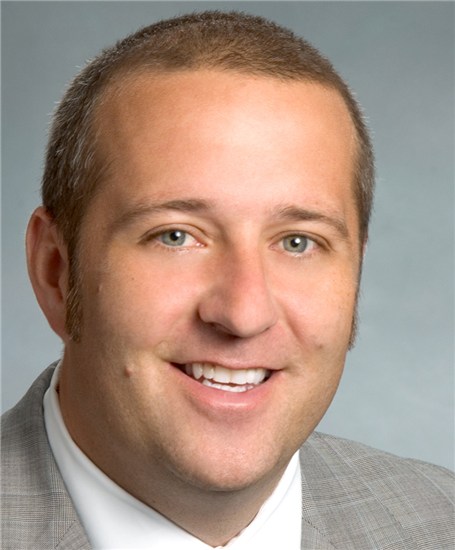
Net cash flow is the lifeblood of an optometric practice. It is the barometer by which the health of the practice is measured. It is also a primary component of a practice’s value. As cash flow increases, the practice value increases. Conversely, if cash flow decreases the practice value will fall accordingly. Decreasing or negative cash flow can mean a dying practice–unless immediate steps are taken.
Let’s see how revenues equate to cash flow and then how cash flow affects value starting with a baseline scenario for three typical practice models:
Practice 1 – Single OD with a small, aging practice
Practice 2 – Single OD with a part-time Associate
Practice 3 – Multiple ODs
Baseline Practice Scenario
The Baseline Practice Scenario metrics have been compiled through the analysis of hundreds of financial statements by Vision One management along with industry data on peer group performance of practices based on gross revenues. Based on this data, the following assumptions are utilized for discussion purposes only in our hypothetical scenarios (your practice performance may vary). Valuation multipliers (e.g., 2.0 x Net Cash Flow) are based on our professional experience and may or may not apply to your individual practice:
Cost of Goods Sold represent 27 percent of gross revenue.
General and Administrative expense (overhead) represent 48 percent of gross revenues.
Net Cash Flow represents 25 percent of gross revenues.
In layman’s terms, for every $1.00 in revenue, $0.27 is spent on lab expense and inventory; $0.48 covers rent, wages, office expense, and the remaining $0.25 goes into your pocket.
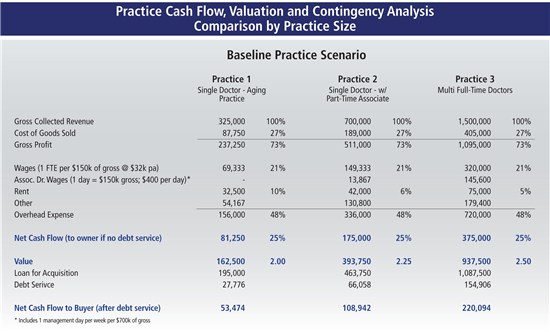
Practice 1 – $325,000 Gross Revenues with a single doctor and an aging practice: Using the average metrics applied to Gross Revenues, the resulting Net Cash Flow would roughly be $81,000. Valuation for this size practice would generally be 2.0 times net cash flow or $162,000. A potential buyer would also need working capital. In this scenario, once debt service for the loan to acquire the practice is subtracted from net cash flow, our new owner is left with approximately $53,000. A corporate-employed or associate OD making an annual salary of $70,000 may find the prospect of ownership appealing until they face the reality of a $17,000 pay cut. Acquiring this small practice may not be economic and will be difficult to finance.
Key question: Is there a growth plan? For anyone looking to purchase a practice with revenues of this size, the key questions are whether or not there is a viable plan for growth or if the location can complement another office as a second practice purchase. Does the office have the capacity to see additional patients? Space, staffing, and equipment? Is there a market niche that can be exploited? An individual doctor will need to rely on outside income support (outside job, working spouse) until revenue and net cash flow increases enough to make the practice economically viable. As a second office, would economies of scale make the office more profitable?
Recommendation: Small practices are often marketed and sold as “golden opportunities” with the buyer’s intention of growing historic revenues through marketing or additional hours. For an owner to succeed they must have a realistic and workable plan to achieve those goals. A lender may require that the new owner budget a management consultant for a period of up to 24 months to help achieve those goals. Of the three scenarios, this is this most challenging to finance.
Declining Practice Scenario: Revenues Drop 10 Percent
This scenario demonstrates the profound effect that a gross revenue drop of 10 percent can have on net cash flow. Overhead expenses remain the same, but the resulting net cash flow can decrease by 30 percent. This directly affects the owner in the pocket today and will decrease potential sales price of the practice in the future if the problems are not addressed immediately.
Recommendations: This scenario calls for hands-on management and quick, decisive action to bolster revenues and cut costs. Here are a few tips:
Why is my cash flow bucket leaking?
1. Identify cash. Follow “holes.” Are inventory levels accurate? Are you carrying excess or obsolete merchandise? Have insurance reimbursements decreased? Is there a spike in any overhead expense?
2. Reassess staff. With reduced revenue the practice likely needs less staff. Analyze staffing requirements for all staff positions and adjust accordingly.
3. Review financial reports. How often do you review your profit and loss and balance sheet statements? Are they accurate? Do you consult with your CPA (other than tax season)? Practices with declining reviews often have poor (or no) recent financial information. To be able to react to a problem, you have to know it exists!
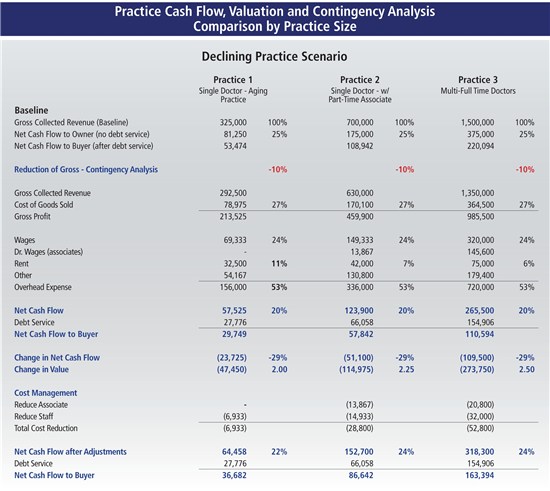
Growth Practice Scenario: Revenues Grow 10 Percent
Our final scenario gives the example of a practice with 10 percent revenue growth for the year. This results in a 20 percent increase in net cash flow if overhead costs remain the same. While more money in your pocket is a good problem to have, there still are associated risks with growth that comes too quickly and is not properly planned.
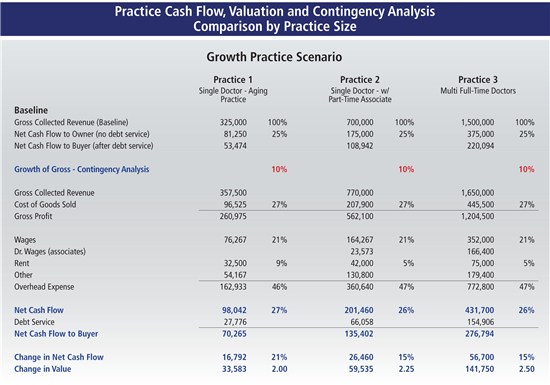
Recommendation:Can your practice sustain that same level of growth with the resources you have available today? Will you need more staff or equipment? As with the other two scenarios, these issues require hands-on management. The long-term payoff is an efficient net cash flow stream that can be verified and potentially duplicated by another doctor, which will maximize the value of your practice.
Related ROB Articles
Taking the Step to Practice Ownership
Planning the Three Stages of Optometric Practice
Kip Holmes is senior loan officer of Vision One Credit Union. To reach her: KHolmes@visionone.org.





















